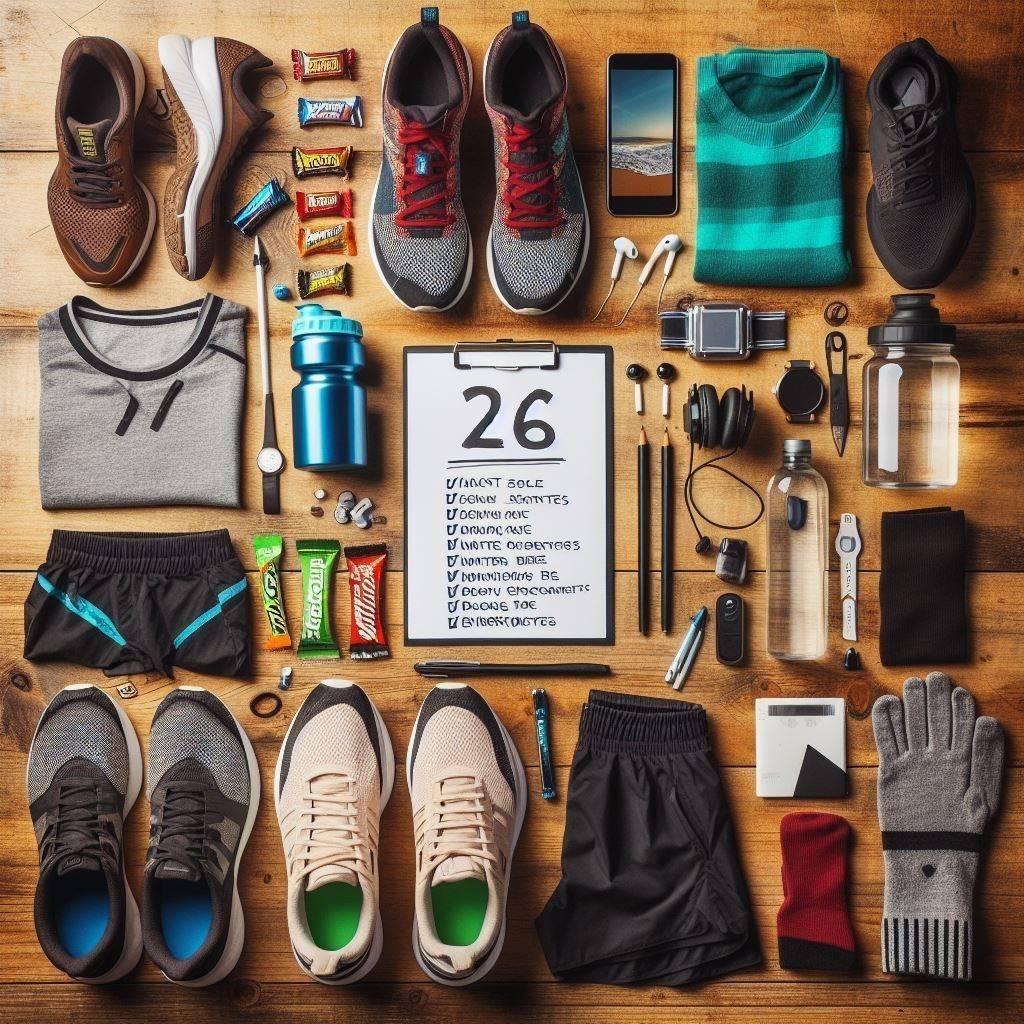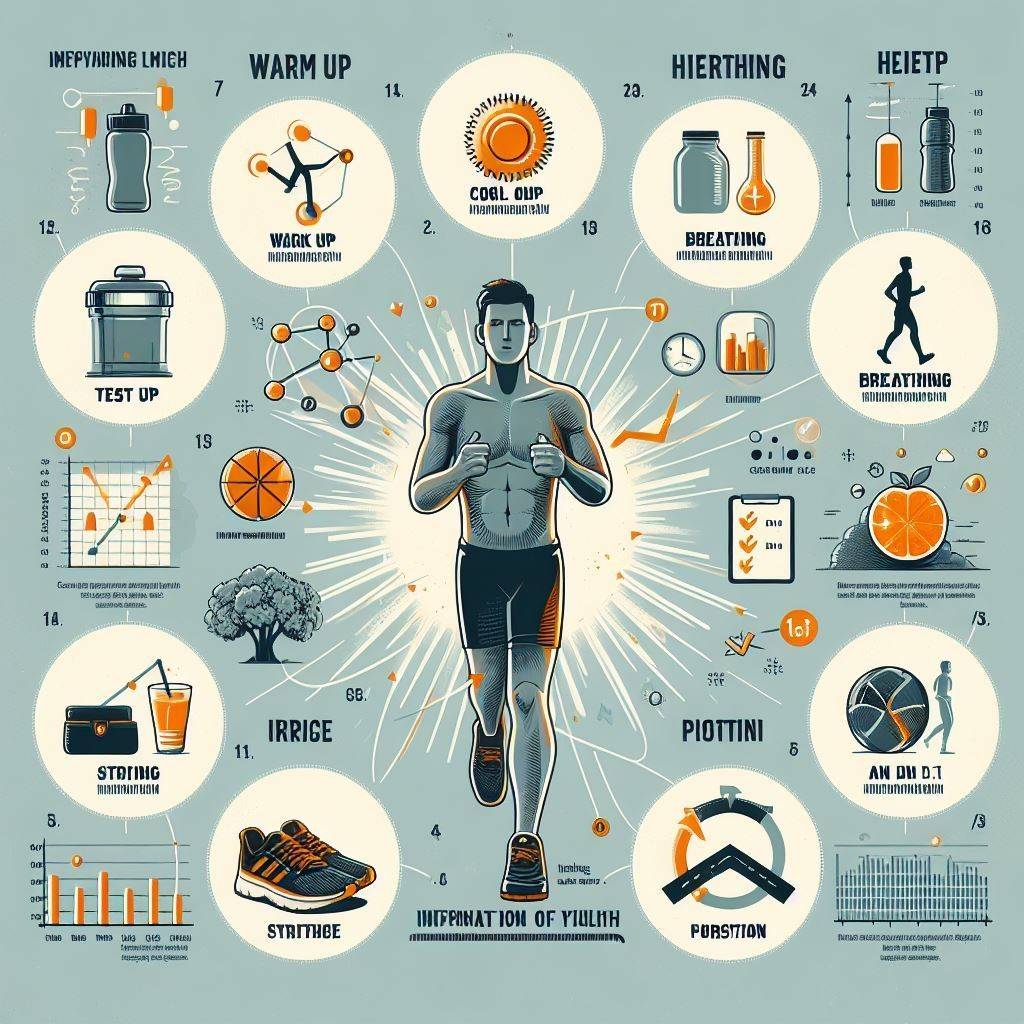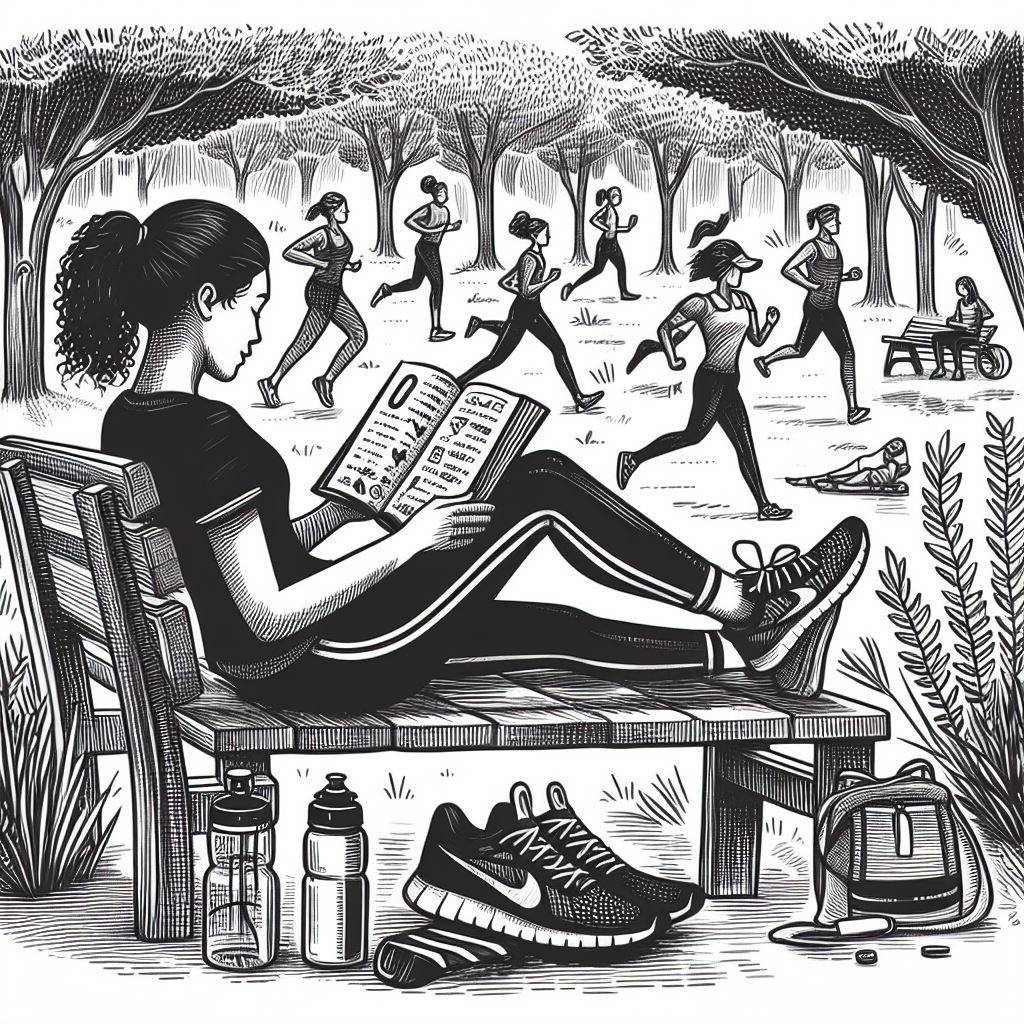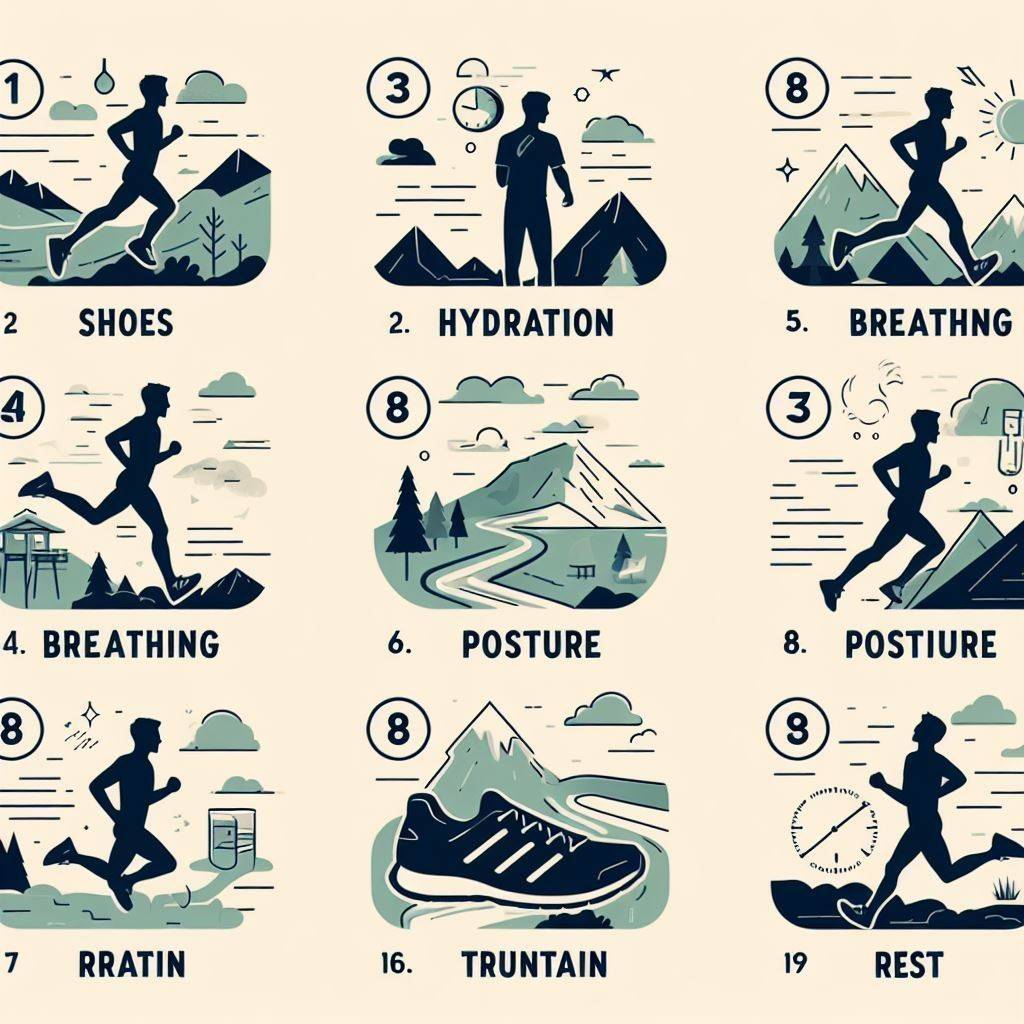Running Tips: Transform Your Routine with 26 Expert Techniques
Enhance your running routine with 26 expert techniques. Discover valuable running tips to boost your performance and endurance!
Introduction
Whether you’re a beginner or a seasoned runner, improving your running technique can help you run faster, farther, and with less risk of injury. Follow these 26 running tips from coaches and experts to take your training to the next level.
The Best 26 Running Tips

1. Warm Up Gradually
Before you head out for a run, spend 5-10 minutes walking or doing dynamic stretches to raise your heart rate and body temperature and loosen your muscles. This will prepare your body for exercise and help prevent injuries.
2. Improve Your Form
Running form starts with an upright posture, relaxed shoulders, and a slight forward lean. Land gently on the mid-foot, keep your strides short and quick, and swing your arms in time with your leg motion.
3. Lift Your Knees
Concentrate on lifting your knees as you run to improve efficiency and speed. Drive your knee up towards your chest, being careful not to overstride.
4. Use Your Arms
Pump your arms to propel yourself forward. Keep your elbows bent at 90 degrees and swing your arms back and forth, not side to side.
5. Lean Forward
Leaning slightly forward from the ankles puts gravity to work in your favor. Imagine there’s a string pulling your chest forward.
6. Lengthen Your Stride
Lengthening your stride engages your glutes and hamstrings to generate more power. Focus on pushing back rather than reaching forward.
7. Increase Your Cadence
Take quicker, lighter steps to reduce impact on joints. Aim for 170-180 steps per minute. Use a metronome app to help.
8. Tighten Your Core
Engage your core muscles to keep your torso stable and aligned. Concentrate on drawing your navel towards your spine.
9. Look Ahead
Fix your gaze about 20 yards ahead to help align your body and prepare for what’s coming on the route.
10. Mind Your Foot Strike
Land on the mid-foot instead of the heel to better absorb impact and propel forward. Imagine landing quietly.
11. Run Tall
Imagine a string pulling from the crown of your head towards the sky to keep your spine long and torso lifted.
12. Relax Your Shoulders
Lift and roll your shoulders back to keep your upper body relaxed. Shake out tension in your arms, neck, and shoulders.
13. Control Your Breathing
Inhale for 3 steps. Exhale for 2 steps to maintain a steady rhythm. Deep belly breaths prevent side stitches.
14. Focus Your Eyes Down
Keep your gaze 6-10 feet ahead of you on the ground. Looking up strains your neck; looking down helps alignment.
15. Spring Off Your Toes
Concentrate on pushing off forcefully with your toes to maximize speed and efficiency with each stride.
16. Pump Your Arms
Drive your elbows back forcefully and keep your hands loose. This generates forward momentum.
17. Engage Your Glutes
Squeeze your glutes with each stride to recruit the large muscles in your backside and maximize power.
18. Lean Into Hills
Lean slightly into hills to use gravity and momentum to push you up. Drive your arms and knees.
19. Use Intervals
Alternate between hard and easy efforts in repeating intervals to boost speed and endurance.
20. Try Fartlek
Fartlek combines intervals and tempo runs by alternating paces however you choose during the workout.
21. Add Hill Repeats
Run hard up a hill, jog down, and repeat to build strength and explosiveness in your legs.
22. Do Strides
Accelerate for 100 meters, decelerate for 100 meters. Strides build speed and running economy.
23. Follow the 10% Rule
Increase your weekly mileage by no more than 10% at a time to allow your body to adapt.
24. Strengthen Your Hips
Weak hips and glutes can affect knee alignment. Do squats, lunges, and resistance band exercises.
25. Stretch Your Hip Flexors
Tight hip flexors pull on the pelvis and limit stride length. Stretch your hip flexors after each run.
26. Choose the Right Shoes
Visit a specialty running store and get fitted for shoes to match your foot type, gait, and training surface. Replace shoes every 300-500 miles.
Transform Your Running with Proper Technique
Whether you’re training for a marathon or just running to stay fit, paying attention to your form and technique is one of the best ways to improve performance and avoid injury. By focusing on elements like posture, arm swing, foot strike, and stride length, you can run faster and go farther with less effort.
Implementing even a few of these expert running tips into your training routine will quickly transform your runs from mere miles to more efficient, comfortable strides. With habits, patience, and consistency, you’ll notice positive changes in your pace, endurance, and confidence.
So take advantage of the vast accumulated knowledge from coaches and lifelong runners. Start putting these techniques for better running into practice on your next workout. With improved form and smarter training, you’ll be setting new PRs and reaching your running goals in no time. Just remember to build up gradually as your body adapts to the increased efficiency.
Happy running!
Additional Running Tips for Improvement

Here are some extra running tips to complement the 26 techniques above:
- Vary your routes to add mental stimulation and work different muscle groups. Run hills, trails, tracks, etc.
- Refuel well after runs by eating a mix of carbs and protein to replenish glycogen stores and aid muscle recovery.
- Don’t over-train by running too many days in a row. Take rest days for recovery and cross-train to supplement.
- Log your miles using an app or journal to track progress, goals, and how factors like sleep and diet impact runs.
- Invest in shoes designed for your foot type, gait, weight, and running surface. Replace every 300-500 miles.
- Build your strength through cross-training like yoga, weights, and plyometrics. A strong core equals a powerful runner.
- Perfect posture helps you remain efficient. Run tall, keep your gaze forward, and shoulders low and relaxed.
- Practice tempo runs at a lactate threshold pace to increase speed and running economy. Start with shorter efforts.
- Increase weekly mileage gradually using the 10% rule to allow your body to adapt to training stresses.
- Divide long runs into pre-run fueling, the actual run, and post-run recovery, including hydration, nutrition, and stretch/foam rolling.
- Listen to your body and take extra rest days when needed to heal from tough workouts and avoid over-training injuries.
- Master the basics first – posture, cadence, foot strike – before tackling advanced speed and endurance workouts. Form prevents injury.
- Run relaxed – don’t clench your fists, tense up your shoulders, or hunch over. Stay loose to conserve energy and smooth out your gait.
- Practice race pace during interval sessions to teach your body and muscles how faster cadences and turnover should feel.
- Do a dynamic warm-up before running – leg swings, skips, lunges – to prep joints and muscles for activity and prevent injury.
- Consistent training over months and years leads to big fitness and performance gains. Be patient through setbacks and plateaus.
How to Make the Most of These Running Tips

With so many techniques, it can be tempting to overhaul everything at once. However, implementing too many new running tips too quickly is a recipe for frustration and potential injury. Here are some recommendations for making steady progress:
- Focus on 1-2 areas at a time for a few weeks until they feel more natural before adding others. Form fixes, take time.
- Practice new techniques on shorter, easier runs first before attempting tempo runs or long runs. Get the basics down before adding speed.
- Be patient and consistent – actual change takes weeks or months. Stick with it even if progress seems slow. Small gains add up.
- Periodide your training to emphasize different techniques at different cycles. For example, focus on increasing cadence during base training, then add hill repeats during strength cycles.
- Write cues on your hand to reinforce the proper form. Try “Spring off toes” “Lean forward” or “Run tall.”
- Invest in some coached sessions or form analysis to make sure you’re nailing techniques before cementing habits.
- Video yourself running every 4-6 weeks to analyze the form. Look for progress and areas needing correction.
- Keep it fun! Don’t let the quest for better form suck out all the parts of running your love. Enjoy scenic routes and don’t just grind out miles.
Advanced Tips for Seasoned Runners
Once you’ve mastered proper running form and built an endurance base, you can take your training to the next level with these advanced tips:
- Add speed work like hill repeats, fartlek, and interval training to build leg strength, power, speed, and aerobic capacity. Start gradually.
- Practice race simulations by doing tempo runs at your goal race pace. Increase the duration of these over time.
- Develop your lactate threshold through tempo runs right below the threshold pace. Aim for 20-40 minutes, building up over weeks and months.
- Strength training 2-3x per week to reinforce muscles used in running like hips, glutes, and core. Compound lifts like squats plus single-leg exercises.
- Perfect downhill running technique by leaning back slightly, taking quicker steps, and letting gravity do some of the work.
- Primary uphill running by driving your arms and knees, engaging your glutes, leaning into the hill, and taking shorter strides.
- Log high mileage weeks (if injury-free) of 40-60 miles to boost aerobic fitness. Surround these with easier recovery weeks.
- Practice visualization and mantras during challenging miles and races. Envision success and repeat positive self-talk.
- Train on tired legs sometimes to simulate the heavy feeling at the end of races. Do speed work a day after a long run.
- Analyze data like pace, heart rate, power, and splits using GPS watches and apps. Identify areas to improve.
- Build a support team with a coach, training group, and sports medicine professional to take you to the next level.
- Target unknown distances from 5Ks up through marathons. Tailor training cycles specifically for goal races.
- Prepare specifically for terrain like trails or hills that are features of your big races. Mimic race conditions.
- Practice mental toughness and focus through meditation, positive self-talk, and visualizing challenges during training.
Sample Training Plan Putting It All Together
Here is an example 12-week training plan that incorporates many of these running tips and techniques:
Monday: Easy run + strides – Practice relaxed form, cadence
Tuesday: Tempo run – Build speed and efficiency
Wednesday: Intervals – Increase leg turnover and running economy.
Thursday: Easy run + drills – Improve form and posture.
Friday: Hilly fartlek – Develop strength and power.
Saturday: Long run – Build endurance; practice fueling and hydrating.
Sunday: Recovery run – Increase blood flow; practice form
2x Weekly: Core + strength training – Improve stability and muscle balance.
1-2x Monthly: Race or time trial – Test fitness; practice racing at a pace
Every 6 weeks: Reduce volume for recovery – Allow the body to absorb training and adapt.
This schedule allows you to practice multiple techniques through different run types and build fitness through periodization. Listen to your body and adapt as needed. Consistency over months and years is key.
With patience and smart training, you will see these running tips pay off with improved performance, fewer injuries, and more rewarding miles. Enjoy the journey!
Conclusion
After reviewing these 26 expert running tips, you now have a comprehensive toolbox to transform your running form, efficiency, speed, and endurance. While it can seem overwhelming at first, choose just one or two techniques to focus on each week and integrate them into your training routine through repetition and consistency. Over time, proper form and smarter workouts will become second nature. Recording your progress in a training journal can keep you motivated on rough days. Whether you’re training for your first 5K or 50th marathon, these tips will help you perform at your peak. By mastering the fundamentals first, and then gradually progressing to more advanced workouts, you’ll be running faster and farther than ever before. So start implementing a few of these proven tips on your next run. Be patient, listen to your body, and enjoy the journey to become your best-running self. Happy training!



